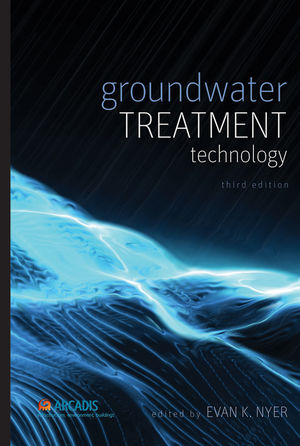Groundwater Treatment Technology, 3rd EditionISBN: 978-0-471-65742-2
Hardcover
432 pages
January 2009
 |
||||||
1. LIFE CYCLE DESIGN Defining the Treatment System.
Life Cycle Flow Considerations.
Influent Concentration.
Life Cycle Concentration Considerations.
Discharge Requirements.
Capital Costs.
Operator Expenses.
Gathering a Complete Set of Data for the Treatment Design.
References.
2. TREATMENT FOR ORGANIC CONTAMINANTS: PHYSICAL/CHEMICAL METHODS.
Pure Compound Recovery.
Air Stripping.
Design of Packed Towers.
Column Components.
Operation and Maintenance.
Alternative Air-Stripping Methods.
Evaluation Procedures—Adsorption Isotherms.
Evaluation Procedures—Dynamic Column Study.
Granular Activated Carbon Replacement Considerations.
Operating Results—Case Studies.
Application With Other Technologies.
References.
3. TREATMENT OF ORGANIC CONTAMINANTS: BIOLOGICAL TREATMENT.
Microorganisms.
Biological Reactors for Contaminated Water.
Typical Ancillary Processes.
Summary.
References.
4. ABOVEGROUND EQUIPMENT FOR IN SITU TREATMENT DESIGNS.
Demand for Effective Remediation Solutions.
Biological Treatment.
Chemical Oxidation.
Physical Treatment.
Summary.
References
5. TREATMENT METHODS FOR INORGANIC COMPOUNDS.
Chemical Addition.
Removal of Suspended Solids.
Membrane Processes.
Distillation.
References
6. AIR TREATMENT TECHNOLOGIES.
Design Criteria.
Treatment Technologies.
References7. OPERATIONS OF TREATMENT SYSTEMS.
Principles of Operation.
Principles of Maintenance.
Record Keeping and Reporting.
System Evaluation and Optimization.
Treatment System Roles and Responsibilities.
References.
8. EMERGING CONTAMINANTS.
Methyl Tertiary Butyl Ether and Other Fuel Oxygenates.
1,4-Dioxane.
Perchlorate.
n-Nitrosodimethylamine and Other Nintrosamines.
Arsenic.
Hexavalent Chromium.
1,2,3-Trichloropropane.
References.
Index.



